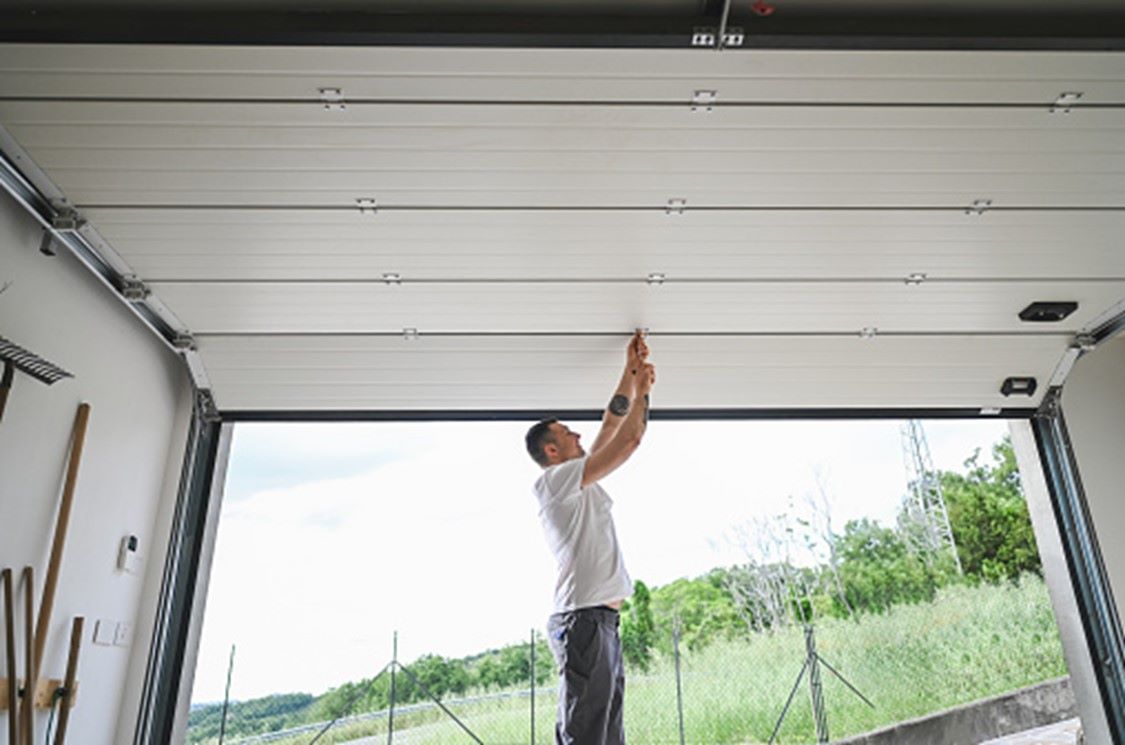Steps for Inspecting Your Garage Door
Guide to Inspecting Your Garage Door
A well-maintained garage door protects your home, streamlines daily routines, and boosts curb appeal. Yet, garage doors are one of the largest moving components in your home, constantly exposed to wear, weather, and mechanical stress. Regular garage door inspections help you catch minor issues before they turn into expensive repairs, and keep your household safe. Here’s a step-by-step guide for Milwaukee area homeowners, brought to you by GEIS Building Products.

Why Inspect Your Garage Door
- Enhances Security
A functioning garage door keeps your vehicles, belongings, and home secure. - Boosts Energy Efficiency
Tight seals and well-lubricated components block drafts and keep your garage comfortable all year. - Prevents Injuries
Safety checks help avoid hazardous malfunctions that could put your family at risk. - Saves Money
Spotting wear early often means simpler, more affordable repairs.
Essential Safety Features to Inspect
- Photo Eye Sensors
Located near the base of the door, these prevent the door from closing if there’s an obstruction.
Check: Gently block one sensor with an object and try to close the door. If the door reverses, the sensors are working. Clean and adjust as needed; call for help if they’re not responsive. - Auto-Reverse Function
Place a sturdy object beneath the closed door. If the door touches it and immediately reverses, this critical safety feature is intact. - Manual Release Cord
Make sure you know where this is located (usually a red cord). When pulled, it should fully disconnect the door from the opener, allowing manual operation in an emergency.
Checking and Adjusting Key Mechanical Components
- Door Balance
Disconnect the garage door opener. Lift the door manually to the halfway point.
Check: Does it stay in place, or does it drop/rise? Doors that don’t balance may stress the opener and springs. - Springs, Cables, and Pulleys
Visually examine for rust, fraying, or gaps.
Listen: Squeaky or noisy springs may need lubrication with a cold-weather product recommended by GEIS. Don’t attempt to repair or replace springs yourself; these are under high tension and can be dangerous. - Rollers and Tracks
Look for chipped, cracked, or loose rollers.
Inspect: Make sure tracks are straight, aligned, and free from debris. Misaligned tracks create resistance and can pull the door off track. - Hinges and Brackets
Check all connecting hardware for rust, wear, or looseness. Tighten with a wrench as needed, but replace parts if they show significant wear.
Structural Integrity Inspection
- Panels and Door Surface
Look for dents, warping, or rust spots that could compromise security or appearance. - Weather Stripping
Examine rubber strips along the bottom and edges.
Check: Replace worn or cracked stripping for a proper seal. GEIS offers replacement weather stripping as well as high-quality insulation kits to minimize drafts and protect against freezing.
Small Parts and Regular Upkeep
- Lubrication
Apply a cold-weather lubricant to hinges, rollers, and springs to ensure smooth movement and minimize winter stiffening. - Sensors and Electrical Connections
Clean dust and debris off sensors. Check that wiring and remote controls are in good condition; replace batteries as needed. - Clear ice and snow
Remove buildup near the base of the door, especially in Milwaukee winters, to prevent obstructions and bottom seal damage.
Safety First Tips
- Never attempt to adjust torsion springs or high-tension cables on your own.
- Always disconnect the opener before testing manual functions.
- Keep hands and loose clothing away from moving parts during inspection.
- Make use of a sturdy ladder and ask for help if needed.
- If you encounter alarming noises, or stuck mechanisms, or notice your garage door is off its tracks, step away and consult a professional.
When to Call a Professional
Contact the experts at GEIS Building Products in the Greater Milwaukee Area if you notice:
- Difficulty opening or closing the garage door
- The door reverses direction unexpectedly.
- Grinding, banging, or other alarming noises during the operation.
- The garage door refuses to open manually.
- The door doesn’t close or open fully.
- The door has jumped off its tracks.
- Panels or hardware appear damaged or broken.
Remember GEIS Building Products offers a complete residential garage door inspection service, from quick garage door roller or belt inspection to full garage door safety checks and opener inspection. Our 4th generation, family-run business stands by our motto, Good Service at Fair Prices.
Make Inspection Part of Your Routine
Proactive, semi-annual garage door inspections can:
- Help you avoid emergency repairs
- Extend the life of your door and opener
- Keep your family and belongings safe
Set yourself a reminder for an annual or semi-annual check. And if you need a replacement part, high-quality weather stripping, or new insulation, GEIS Building Products offers everything from affordable steel entry doors to custom in-house wood doors, crafted and installed by our experienced team.
Find peace of mind from a company that’s been trusted since 1955. For all garage door needs, shelving solutions, and personalized service in Milwaukee, don’t think. Don’t think call GEIS!
